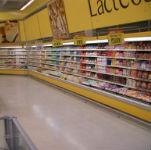 International. Expanding the cold chain in developing countries could reduce greenhouse gas emissions by 180-550 million tons of CO2e/year by 2050, according to a new report.
International. Expanding the cold chain in developing countries could reduce greenhouse gas emissions by 180-550 million tons of CO2e/year by 2050, according to a new report.
The study released by the World Cold Chain Council (Gfccc) highlights the importance of refrigeration technology in reducing greenhouse gas emissions associated with current food waste, due to the lack of, or inefficiencies in the cold chain.
Gfccc Chief Executive Kevin Fay said: "It is important that we stay focused on all aspects of the potential for reducing greenhouse gas emissions, especially those related to food waste. Technology offers significant savings today and in the future as new innovations evolve."
In 2013, the Food and Agriculture Organization of the United Nations (FAO) concluded that if food waste were a country, it would be the third highest emitter of greenhouse gases in the world, second only to China and the United States.
The Gfccc was organized under another United Nations initiative, the Climate and Clean Air Coalition (CCAC), to address the possibility of reducing the contribution of hydrofluorocarbons (HFCs) as a component of HFC climate policy.
Fay emphasizes that there are significant opportunities to reduce greenhouse gas emissions from this sector by expanding the cold chain, especially in developing countries, improving the energy efficiency of the equipment being used, and transitioning equipment from relying on HFCs, to low global warming potential (GWP) compounds and technologies. including HFOs, carbon dioxide, hydrocarbons and ammonia.
The food cold chain currently consumes around 20% of the world's HFC use today, and energy consumption through technology is an important factor in its global contribution of Greenhouse Gases.
The study conducted by Deloitte can be downloaded by clicking here.














